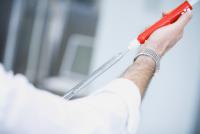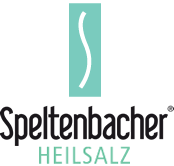Analyses
The balneological analysis of the University of Graz confirms that the iron–chloride–iodide thermal brine of the thermal salt spring Speltenbach has a scientifically recognized curative effect or that such an effect is anticipated.
The total mineralization of the water is just above 40 g/kg and the value determining substances are 94.0 equiv.% for sodium and 96.1 equiv.% for chloride. The concentration of iron is 11.1 mg/kg and 7.6 mg/kg for iodide. The Speltenbach curative water can be described as a high-level brine due to its high mineralization (15g/kg sodium; 23 g/kg chlorine).
The curative brine has an iodide concentration of 7.6 mg/kg (a minimum concentration of 1mg/kg is used to define iodine springs). During bathing, the iodine reabsorption by the intact epidermis is comparably low. A very high amount of iodine, however, is stored in the skin within storage areas in the so-called horny skin, which provide an effective post-reabsorption for hours or even days.
1000 g of HEALING SALT are produced from 24 litres of thermal water through the process of vacuum evaporation and contain:
| Na | 307.8 g/kg |
| Chloride | 482.3 g/kg |
| Sulphate | 13.8 g/kg |
| Fe II+III | 0.171 g/kg |
| Iodide | 0.108 g/kg |
The HEALING SALT extracted with the aid of vacuum evaporation is a very stable product and is suitable for both shipping and storage. Its chemical and physical properties are – in comparison to the brine – not altered in a manner which significantly influences the medicinal benefit.
Medicinal spa water analysis, Institute for Chemistry UNI Graz, Dept. of Analytical Chemistry, dated 22.11.2006
Supplementary expertise, dated 07.12.2006
Operational authorization with the official notification of the Styrian Provincial Government, dated, GZ.: FABA-95.08-9/2009-10




